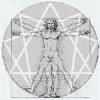B1024 <=> B1026 (BTG XLII Beelzebub in America, p. 1025)
“Their custom of ‘self-fumigation’ also serves by the way to destroy these insects.
“Although the men-beings of that tribe are indeed exceedingly filthy, yet not only do no venereal diseases exist among them, but they do not even know and have never heard that such diseases can be contracted.
“In my opinion, this is the outcome entirely of that custom of theirs, which some ancient clever being there invented for the welfare of the people of his epoch, and which passing afterwards from generation to generation, chanced to reach these contemporary filthy beings of the tribe of Kolenian gypsies.
“For this rite of self-fumigation every family of gypsies has also what is called an ‘Ateshkaini,’ that is a stool of special form which they regard as sacred; and this whole ritual of theirs they perform with the aid of this sacred stool.
“Every family of these gypsies has also what is called a ‘Tandoor,’ that is, a special kind of earth pit, such as is found in the houses almost everywhere on the continent of Asia and which serves as a hearth on which they usually bake bread and prepare food.
“In these Tandoors in Asia they burn chiefly what is called ‘Keeziak’ – a fuel composed of the dung of quadruped animals.
“The rite itself consists in this, that when the family of these gypsies returns home in the evening they first remove all their clothing and shake them in this Tandoor.
“It is almost always hot in this Tandoor because the dung burns very slowly and the ashes formed around the Keeziak keep the fire burning for a very long time.
“By the way, it is interesting to remark, that when these gypsies shake their clothes in the Tandoor a highly interesting phenomenon results from this action of theirs; namely, the lice in their clothes crawl out and falling into the fire explode before burning, and the various sounds of the explosion of these lice, large and small, produces altogether a surprising ‘musical symphony.’

